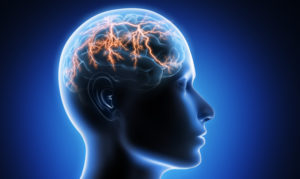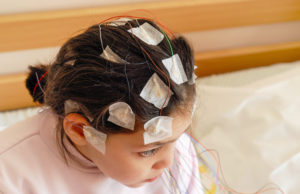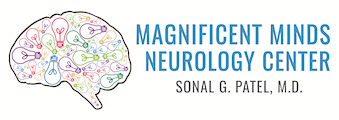Proudly Part of Privia Health
EEG (Electroencephalogram)
ROUTINE EEG TESTING
An EEG (electroencephalogram) is a test used to evaluate the electrical activity in the brain. Brain cells communicate with each other through electrical impulses that can be used to help detect potential problems associated with the brain’s electrical activity.

This testing a non-invasive test that records electrical patterns in your brain and is used to help diagnose conditions such as seizures, epilepsy, head injuries, dizziness, headaches, brain tumors, and sleeping problems.
Our routine EEG process takes about one hour start to finish. The testing itself takes approximately 30 minutes. During the hookup, the scalp is cleaned and electrodes are placed on specific areas of the scalp with a water-soluble paste to measure the electrical activity for each area of the brain. We have a room with a small twin bed that we use for testing so that patients can relax comfortably during the testing.
There are three parts to the testing itself based on the needs and age of the patient:
Rest: For about 20 minutes of the study, your child will be laying down with their eyes closed so they can go into a “sleep-like” state. Some patients may require sleep-deprivation the night prior to testing. This will be discussed with the doctor if appropriate.
Photic Stimulation: Our test uses 8 rounds of flashing lights that get quicker with each round. We use the intermittent photic stimulation to detect abnormal epileptogenic sensitivity to flickering light. If your child is experiencing light sensitivity at the time of testing, they may close their eyes and this will not affect the study.
Hyperventilation: During the testing, your child might be asked to hyperventilate or breathe quickly. We attempt hyperventilation for 2 minutes at the end of the study, followed by 3 minutes of post-hyperventilation where your child will relax and breathe normally. We do use a pinwheel for hyperventilation for younger children to elicit quick breathing. Some patients can experience lightheadedness or tingling in the extremities during or immediately after hyperventilation, but these symptoms should go away by the time you leave the office.
After testing, your child will have paste in their hair that will wash out easily with warm water.
DUE TO CONCERNS FOR COVID-19, we do use disposable materials during this testing and sanitize equipment thoroughly between patient appointments. We do request that during this time, only one parent attend the testing appointments and we also request that masks be worn at all times, unless otherwise instructed by our EEG technician. If you or your child is unable to wear a mask due to age or medical condition, please contact our office prior to your appointment so that we can make accommodations.

Q&A
This testing will not hurt. While the photic stimulation and hyperventilation may be uncomfortable for your child, we do not do anything during this testing to cause pain. During the testing, we are pulling the electrical pulses from your child’s brain and do not use any type of outside electrical stimulation.
No. We will move the hair out of the way to expose the scalp. From there, we will place the electrodes touching the scalp directly.
Unless otherwise specified by the ordering provider, your child should do everything normally including taking any medications prior to and after the testing.
It is recommended not to drink coffee or other caffeinated drinks prior to your testing. We want your brain to be able to go into a sleep-like state during the testing and caffeine can interfere with this.
We have a tablet with access to kid’s shows through Netflix if this type of distraction is the only way to keep your child calm while placing the electrodes. If needed, once applied, we will wrap your child’s head in gauze to keep the electrodes in place during the study. Infants can be held by a parent during the testing as well.
